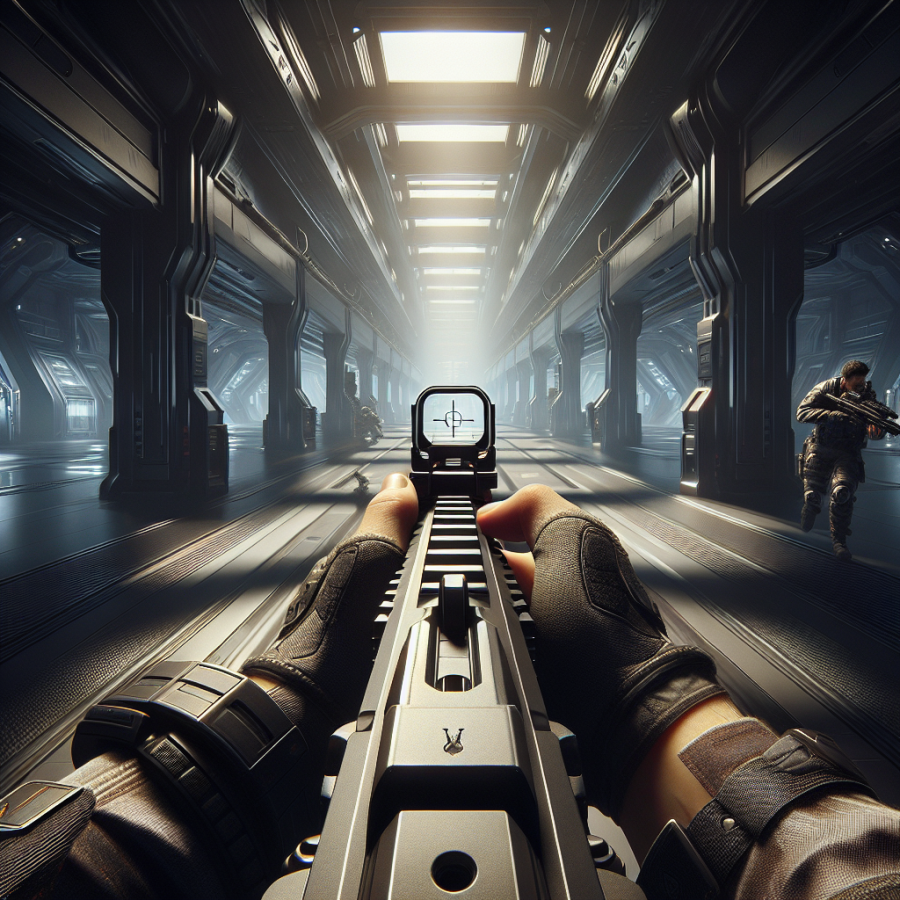Enhancing Your Reflexes and Precision: Essential FPS Skills
Certainly, to expand the professional blog section focusing on enhancing reflexes and precision within the context of FPS (First-Person Shooter) games:
Reflexes and precision form the cornerstone of any competitive FPS player's skill set. In the heat of battle, split-second decisions and pinpoint accuracy can make the difference between victory and defeat. To climb the ranks and dominate the arena, intensive training and deliberate practice are essential for sharpening these attributes.
Increasing your reaction time is a multifaceted endeavor. Start with optimizing your gaming setup; a high refresh rate monitor and a responsive mouse can reduce input lag, allowing for quicker in-game responses. Adjusting your mouse sensitivity to a level that balances swift movements with controlled aiming is also crucial. Some players benefit from a lower sensitivity, which can enhance precision at the expense of speed, while others may prefer higher sensitivity for faster turning and reflexive shots.
To develop quicker reflexes, engage in aim trainers and reflex training programs that are specifically designed to challenge and improve your hand-eye coordination and reaction speed. These programs often include exercises that simulate in-game scenarios, helping you to anticipate enemy movements and act decisively. Track moving targets, practice flick shots, and repeat these drills to develop muscle memory.
Precision, on the other hand, is achieved through meticulous aim practice. To refine your aiming skills, focus on headshots and other critical hit zones in target practice sessions. This not only rewards you with more efficient eliminations in a real match but also hones your ability to consistently target the most impactful areas on an enemy player. Spend time on custom maps that are designed to train crosshair placement. Consistently aligning your crosshair at head level, even when not actively engaging an enemy, can significantly improve your accuracy.
Understanding the maps and the common traffic patterns within them is also vital for honing reflexes and precision. By having a mental map of common engagement points and enemy routes, you can pre-aim or pre-fire these locations, giving you the upper hand in firefights.
Another essential aspect is your mental and physical well-being. Regular physical exercise, adequate sleep, and a balanced diet not only maintain your overall health but also contribute to faster reflexes and a sharper mind. Stress management techniques such as deep breathing or meditation can keep you calm under pressure, leading to more precise and deliberate decisions during gameplay.
Lastly, it's important to review your gameplay footage.
Read also:
Conquering Peaks: Insights into the Mountaineer's Journey
Strategic Positioning and Map Control: Dominating the Battlefield
For any player striving for dominance in first-person shooter (FPS) games, understanding the tactical elements of strategic positioning and map control is crucial. These tactics go beyond mere reflexes and weapon mastery; they are about making informed decisions that place you and your team in advantageous positions to outmaneuver and overtake the opposition.
Strategic positioning involves choosing the optimal location on the map that provides defensive strength, offensive opportunities, and control over key areas. This encompasses high ground advantage, cover availability, line of sight, escape routes, and choke points. The high ground gives you a broader view of the battlefield, making enemy movements easier to track and making you a harder target. Cover is essential for protection during firefights; always move from one cover to another to avoid being exposed. Moreover, line-of-sight control allows you to see enemy advances without being seen, and well-thought-out escape routes enable quick disengagement when the tides turn against you.
Choke points are areas of the map where traffic is funneled due to the layout, such as doorways, narrow hallways, or bridges. Controlling these points can be incredibly powerful as it can delay, or even prevent, enemy advances while setting up your team for successful defense or ambushes. However, be wary of being on the wrong side of a choke point as enemies can use the same strategies against you.
Map control, on the other hand, is about taking over vital parts of the map and using them to dictate the pace and flow of the game. It’s about understanding the spawn system, resource locations, like health packs and ammo, and objective-based points of interest, such as capture zones or bomb sites. Timing is crucial in map control; knowing when to push for objectives and when to hold back is key. Denying the opponent access to resources cripples their ability to sustain a prolonged fight, while controlling spawn points can lead to spawn trapping, a tactic where the enemy team is consistently killed shortly after spawning.
Effective communication with your team is paramount in executing these tactics. Informing teammates of enemy positions, which areas are compromised, and coordinating attacks and defenses elevates the effectiveness of strategic positioning and map control. Through rigorous communication, the team can adapt to the dynamic changes within the game and maintain a stronghold on critical areas of the map.
When applied properly, strategic positioning and map control are powerful methods in dominating the battlefield.




